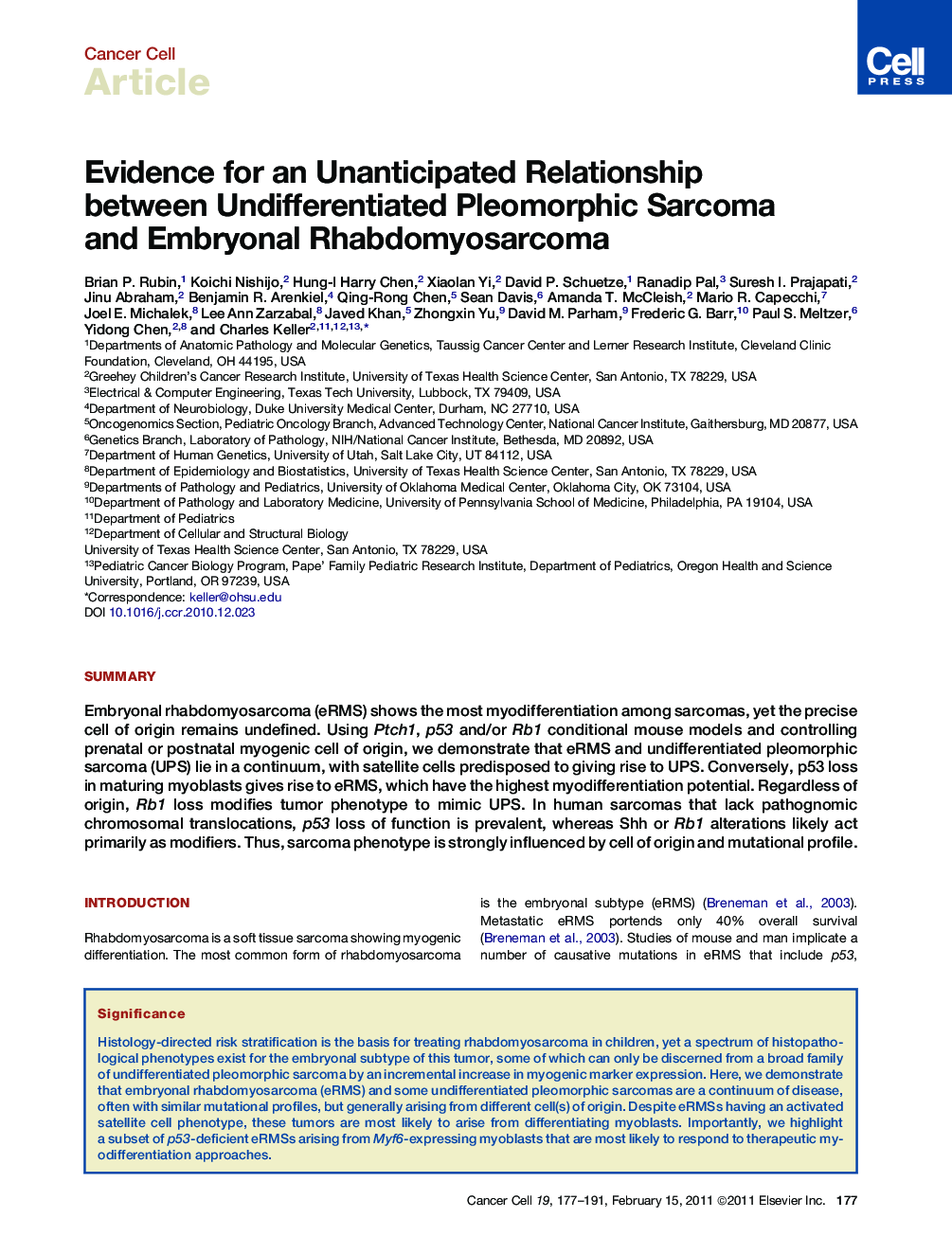| Article ID | Journal | Published Year | Pages | File Type |
|---|---|---|---|---|
| 2107571 | Cancer Cell | 2011 | 15 Pages |
SummaryEmbryonal rhabdomyosarcoma (eRMS) shows the most myodifferentiation among sarcomas, yet the precise cell of origin remains undefined. Using Ptch1, p53 and/or Rb1 conditional mouse models and controlling prenatal or postnatal myogenic cell of origin, we demonstrate that eRMS and undifferentiated pleomorphic sarcoma (UPS) lie in a continuum, with satellite cells predisposed to giving rise to UPS. Conversely, p53 loss in maturing myoblasts gives rise to eRMS, which have the highest myodifferentiation potential. Regardless of origin, Rb1 loss modifies tumor phenotype to mimic UPS. In human sarcomas that lack pathognomic chromosomal translocations, p53 loss of function is prevalent, whereas Shh or Rb1 alterations likely act primarily as modifiers. Thus, sarcoma phenotype is strongly influenced by cell of origin and mutational profile.
Graphical AbstractFigure optionsDownload full-size imageDownload high-quality image (202 K)Download as PowerPoint slideHighlights► Embryonal rhabdomyosarcoma and undifferentiated pleomorphic sarcoma form a continuum ► Mutant p53, Ptch1, or Rb1 in satellite cells gives rise to undifferentiated sarcoma ► Embryonal rhabdomyosarcoma arise from myoblasts but express satellite cell markers ► Rb1 loss acts as an apparent modifier for sarcomas by inducing dedifferentiation
